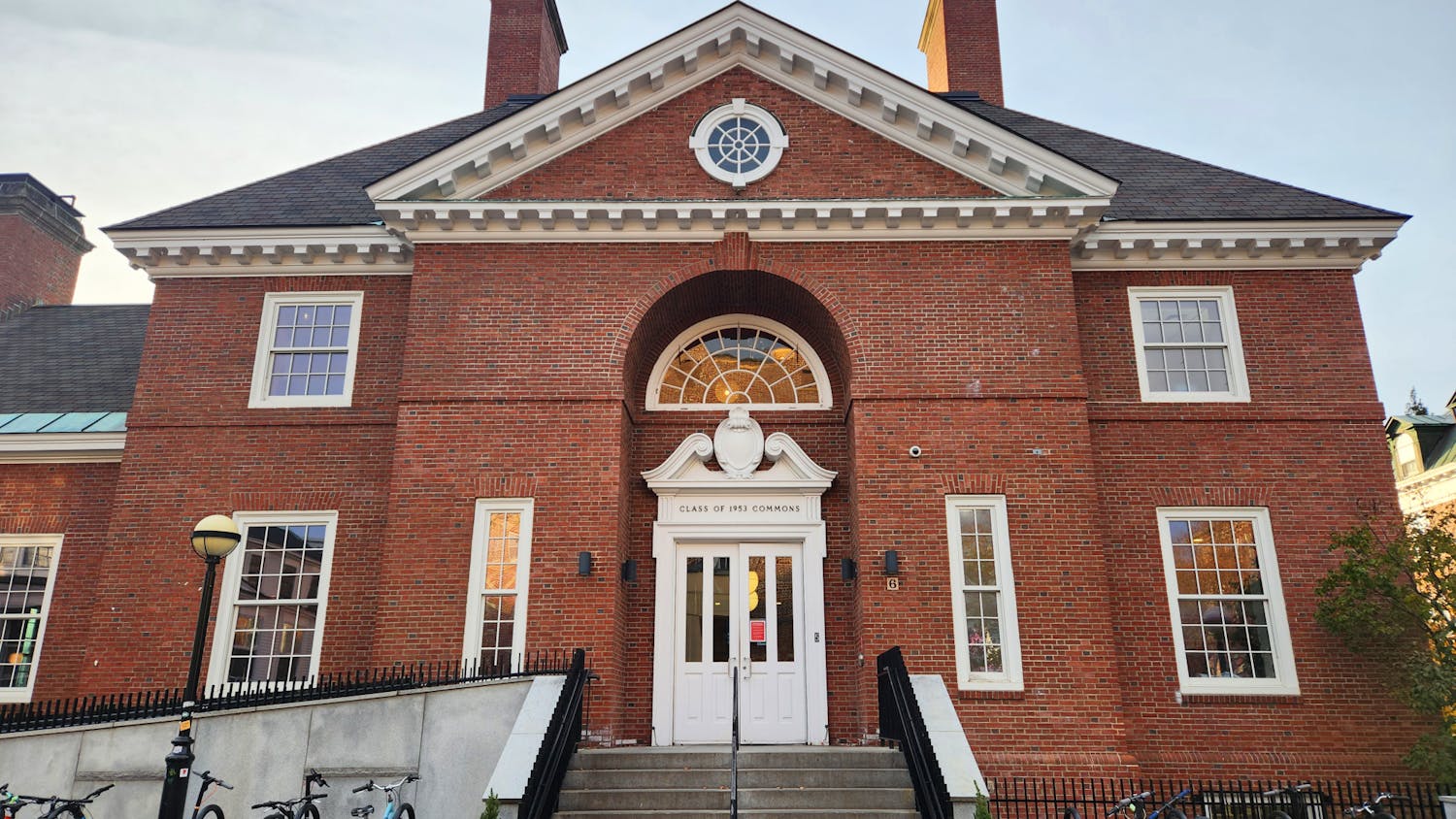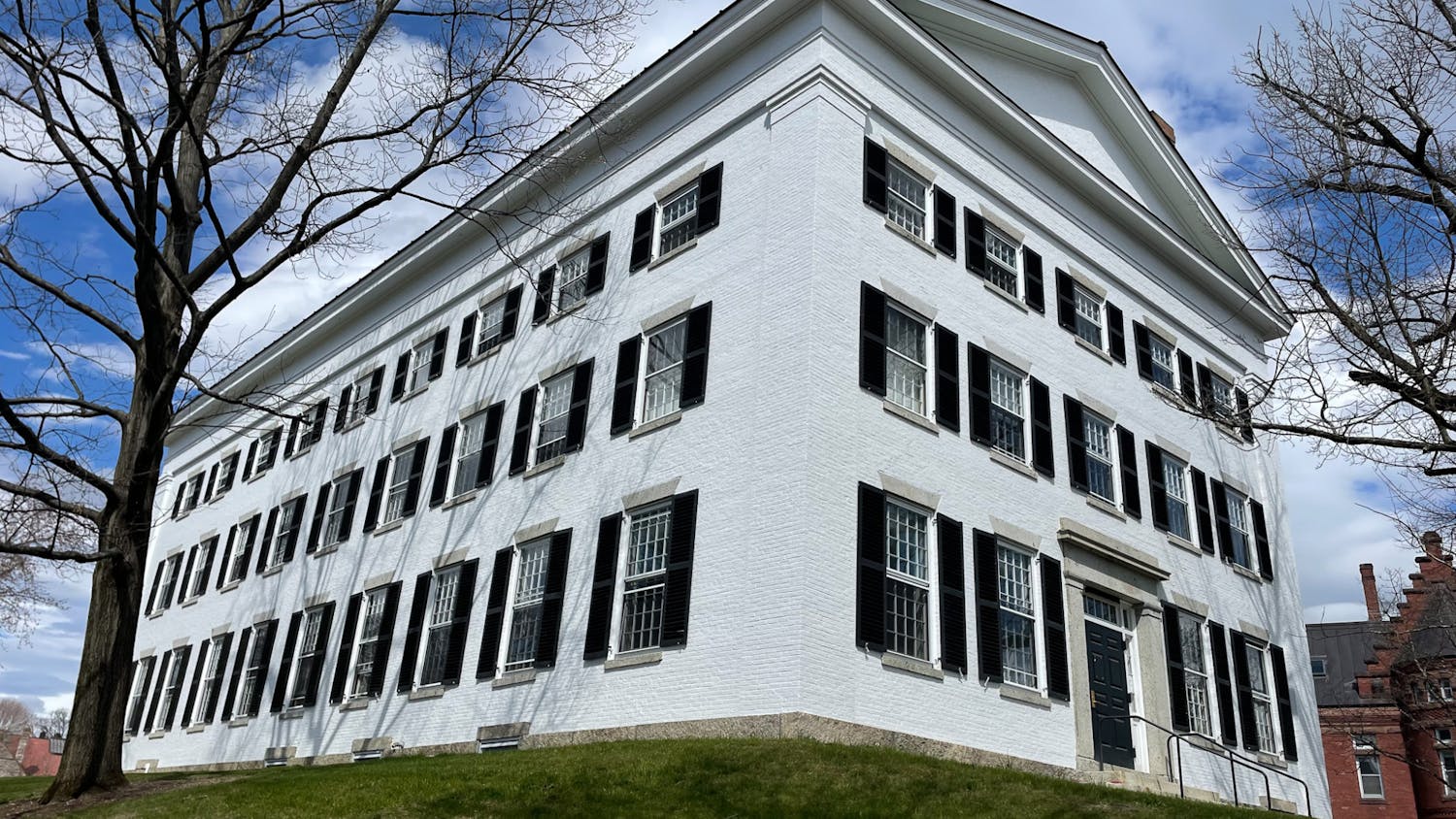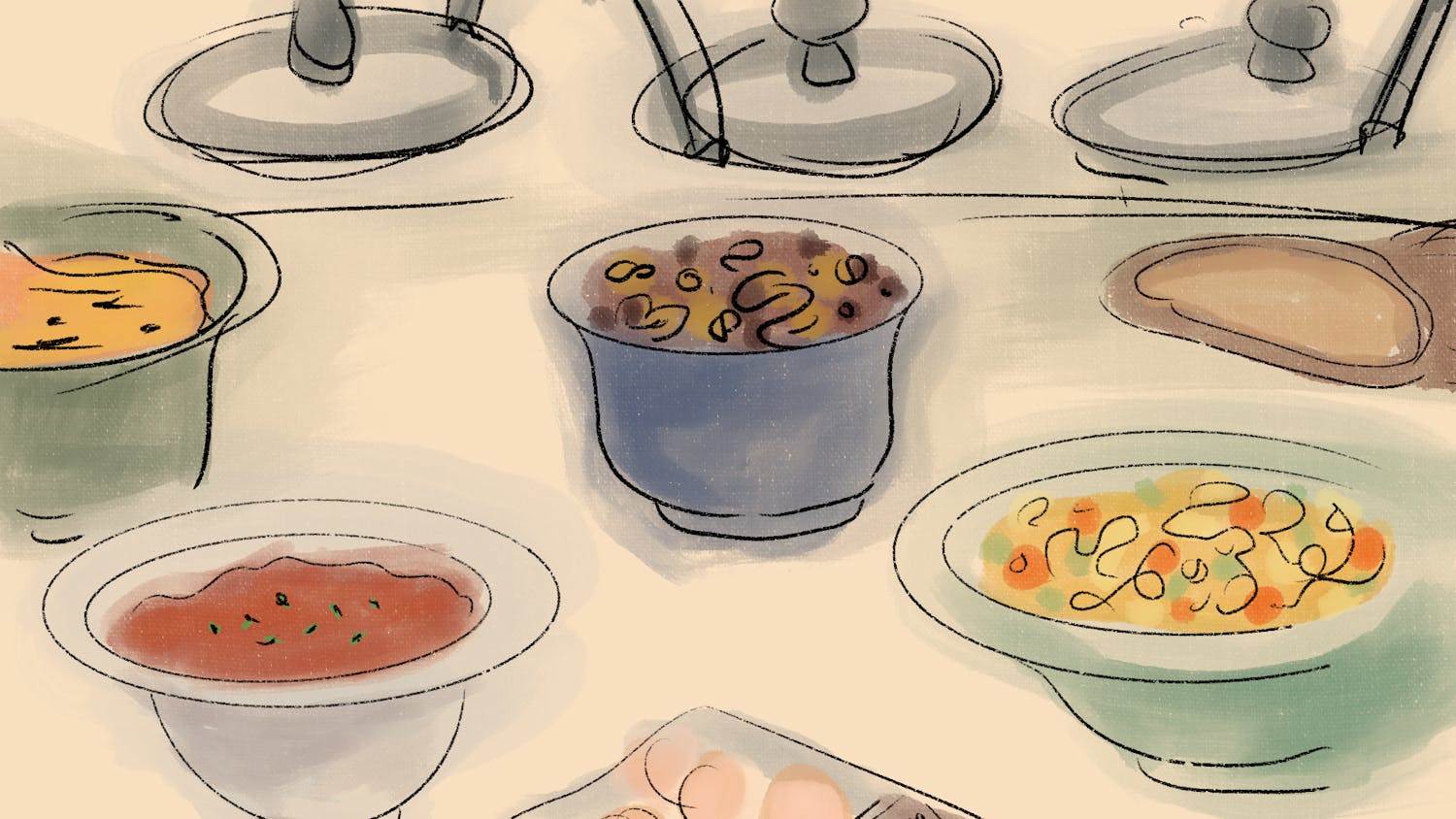The fate of the Hovey Murals, located in the basement of the Class of 1953 Commons, is still up in the air but may be decided by the end of the spring term.
Interim provost David Kotz ’86 has assembled a study group consisting of College students, faculty and staff to provide a recommendation on the future of the murals, which were painted by Walter Beach Humphrey of the Class of 1914. The content of the murals, depicted through four painted scenes, has attracted criticism due to its depictions of Native Americans and women, some of whom are shown in a half-nude state.
Currently, the murals remain off-limit to the general public, and can only be used for teaching purposes by faculty and the Hood Museum of Art.
The group, co-chaired by deputy director of the Hood Museum Juliette Bianco ’94 and Native American studies professor N. Bruce Duthu ’80, will recommend whether to keep the murals where they currently are — a room located in the basement of the Class of 1953 Commons — or to move them to an off-campus storage facility managed by the Hood Museum. Kotz said that he hopes the group’s decision will be finalized by the end of spring term.
The decision to form the study group came after Kotz received a letter this spring from Native Americans at Dartmouth. He acknowledged that the murals have been a controversial object for decades and that even the mere presence of the murals — despite being inaccessible to the public — might be offensive for some.
“I decided it would be best to have a group of people look at it deeply and make some recommendations as to what we should do with it,” Kotz said. “It’s a complicated question because of [the murals’] impact on the Native American community on campus, and because of their value for teaching and scholarship and because of the sentiments of many other generations of Dartmouth alumni who have had a connection to those murals, both positively and negatively.”
Kotz said that he was looking for a wide array of perspectives when it came to assembling the study group. Other members of the group include interim director of the Native American program Kianna Burke ’12 A&S’19, government professor Michelle Clarke, art history professor Mary Coffey, Native Americans at Dartmouth members Brooke Hadley ’18 and Jennie Harlan ’20, Native American studies and environmental science professor Nicholas Reo and Native American visiting council member Anna Tsouhlarakis ’99.
Although Kotz asked the study group to weigh the advantages and disadvantages of the two options, he added that he would be open to any alternative recommendation.
In a joint email statement, Bianco and Duthu wrote that the group’s meetings have focused on “accomplishing key research and outreach initiatives.”
They wrote that it was still too early to discuss the pros and cons of the two options, and that they expected these discussions, as well as “understanding from the research and outreach” to constitute the majority of the study group’s future meetings.
Bianco and Duthu wrote that the group’s research has focused thus far on both the “history of the murals as visual objects,” which includes their commission, location and themes, as well as the usage, response to and care of the murals since their inception. The group’s outreach initiatives have focused on understanding the diverse views from the murals’ array of stakeholders in regards to the ways in which the murals have been used, viewed and understood.
“The murals have been the subject of interpretation and dialogue for decades, and therefore learning about the conversations and decisions of the past is best practice for the committee,” they wrote.
However, Bianco and Duthu stressed that they are only providing a recommendation — the final decision regarding the Hovey Murals does not rest with them. The study group will consider the murals’ history as well as their presentation of the College’s history and its depiction of women and Native Americans.
The murals are based on a drinking song written by Richard Hovey, Class of 1885, entitled “Eleazer Wheelock.”
According to “The Hovey Murals at Dartmouth: Culture & Context,” a collection of essays written by College faculty that was published in 2011, the mural depicts Wheelock, the College’s founder, “entering the North Woods with a five-hundred-gallon barrel of rum” and then meeting with a local Native American chief who proceeds to become one of the College’s first undergraduates.
The controversial artwork was painted in the late 1930s by Humphrey as a response to José Clemente Orozco’s murals in the basement of Baker Library entitled “The Epic of American Civilization,” which were painted between 1932 and 1934.
A group of alumni, led by Humphrey, was angered by Orozco’s “strident Expressionist aesthetic” and what they perceived as “socialist” subject manner, according to the “The Hovey Murals at Dartmouth.” Humphrey petitioned then-College President Ernest Martin Hopkins to allow the painting of “a real Dartmouth mural.” Despite Hopkins defending Orozco’s work as “a lecture in paint,” he eventually relented to the pressure.
The murals were painted in the former faculty dining room known as Hovey Grill, located in the basement of the Class of 1953 Commons, which was formerly known as Thayer Dining Hall.
In the 1970s, following the re-commitment by former College President John Kemeny to the College’s mission to educating Native Americans, the murals became the focus of increasing scrutiny and student protest. By 1979, the room in which they were located had been closed following student protests, and the murals were then covered up with removable panels in 1983. A decade later, the College considered turning the former Hovey Grill into an art gallery that would display the murals, but those plans never came into fruition.
The Hovey Murals have been the subject of previous study groups as well. In 2006, amidst plans to demolish Thayer Dining Hall, former director of the Hood Museum of Art Brian Kennedy said that a committee formed under the direction of the Provost’s Office was in the process of determining how best to remove and preserve the murals. Once the plans to demolish the Thayer Dining Hall were scrapped, a committee of advisors recommended former College President Jim Yong Kim to turn Hovey Grill into a study room for Dartmouth classes led by professors and Hood Museum of Art educators. Since their recommendations in 2008, Hovey Grill and the murals are still only available for teaching endeavors.
Anthony is a '20 from Dallas, TX. Anthony plans to major in Film & Media Studies at Dartmouth, and decided to join The D to further his passion for writing. In addition to working with The D, Anthony considers himself a passionate supporter of the Dallas Cowboys and spends his days watching movies, admiring fine art, and using the Oxford comma.



